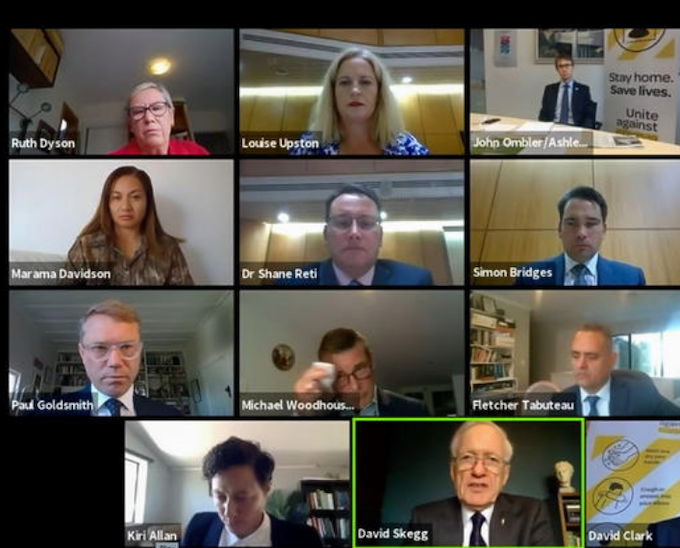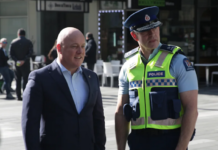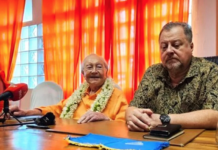
Every day at 1pm New Zealand’s Director-General of Health Dr Ashley Bloomfield announces precise figures on the number of confirmed and probable cases of Covid-19 in the country.
He is working on the best information available, and during this week the level of community transmission was put at around 1 percent.
But Sir David Skeggs, a renowned professor of epidemiology, does not believe the health authorities really know what the level is.
READ MORE: Al Jazeera coronavirus live updates – US deaths 6000, infections top 240,000
- Duterte’s ‘shoot them dead’ virus order
- Vanuatu using Covid-19 to impose censorship
- See all RNZ coverage of Covid-19
He explained why when he appeared before Parliament’s Epidemic Response Committee at its first meeting on Tuesday.
“Testing has been heavily skewed towards people who have returned from overseas or their contacts, so it’s no surprise that most of the cases detected have links to overseas travel,” he said.
“The actual number of people who have been infected will be far higher than the 589 notified, and we really have no idea of the extent of community spread.”
When Bloomfield was asked at his daily briefing to comment on what Sir David had said, he replied: “We have some idea, so I disagree with him in that sense. We know where our cases of community spread are, we know we have these clusters, which are being investigated to see what the source of infection is.
‘We have some idea’
“So we have some idea. The more testing we do, the more we will get a picture of community transmission.”
After 10 days of lockdown, it has become clear that more testing needs to be done. The number of people returning from overseas is finite, it is steadily dropping. The people they have had contact with have been and are being traced.
It is the way we deal with community spread that will determine whether we can beat Covid-19, and when the lockdown can be lifted.
The government knew this from the beginning. “Stay home, save lives” was Prime Minister Jacinda Ardern’s message.
What it doesn’t know is how effective the restrictions are as people go to supermarkets and other essential services, mostly but not always obeying the social distancing rules.
On Wednesday the testing criteria was broadened, and in Bloomfield’s words the requirement of having been overseas or having been in contact with someone who had returned, or having been in contact with a known case, was “decoupled” from symptoms.
Anyone with symptoms that could mean a person has Covid-19 will be tested.
Random testing not ruled out
Random community testing has not been ruled out, but will depend on capacity.
The capacity to carry out tests has also been an issue. By the end of the week it had ramped up to more than 2000 a day and the aim is to reach 5000. Current capacity is put at around 4000 and is increasing.
Scrutiny of the effectiveness of the lockdown restrictions is also ramping up, and the Epidemic Response Committee is the lead player. There are 11 MPs on it, two-thirds opposition and one third government.
They meet remotely and have been calling in cabinet ministers, experts such as Sir David Skeggs, and department heads. Questioning is intense and so far there has been very little of the point scoring that usually goes on in Parliament.
The meetings are livestreamed and RNZ’s website carries it, which is the easiest way to find it. Details of when it meets are on Parliament’s website, it is essential for anyone who wants to know what is going on.
Publishing shock
The horrendous economic impact of the lockdown becomes more evident as each day passes, the latest shocking news being the decision by the publishing house Bauer to shut down magazines including The Listener and Woman’s Weekly.
The publisher turned down the wage subsidy on offer, which left Ardern “extraordinarily disappointed“. It was believed to have been in difficulty before Covid-19 and said it couldn’t see advertising revenue rising to pre-lockdown levels when Level 4 is lifted. Not being allowed to publish for four weeks appears to have pushed it over the edge.
The National Party wants the government to be more transparent with economic data, such as the number of people applying for the unemployment benefit.
Finance spokesman Paul Goldsmith told RNZ on Friday the extent of the consequences of the lockdown must be made clear. The absence of data on the wage subsidy scheme, for example, made it difficult to assess its effectiveness.
“It was set up early on when we were talking about the West Coast and tourism,” he said. “Now we’re dealing with a situation where very large parts of the economy have zero revenue.”
Goldsmith also raised an issue that has become critical for business survival – rents. Most commercial landlords don’t appear to have been giving their small business clients a break.
“The second biggest cost for most businesses is their rent and there’s huge pressure on that at the moment, Goldsmith said.
‘Zero revenue, things pile up’
“If you’ve got zero revenue, you might have a bit of a wage subsidy to help pay employees, but the costs around rent and other things are just piling up.”
National is not criticising the government for imposing the lockdown, but it is becoming increasingly worried about the number of businesses that will fail and never reopen.
Right at the core of the economic impact is how long the lockdown will last, and that depends on the success of the war the health authorities are waging on Covid-19.
Bloomfield, while acknowledging more testing needs to be done, has pointed out that our per capita rate is double that of the UK and 50 percent higher than South Korea, which is considered to be the benchmark country.
Compared with other developed countries, New Zealand with one death so far is doing very well. More testing will help authorities discover the extent of community spread and by this time next week it may be possible to see how close the light at the end of the tunnel really is.
New cases number drops
RNZ reports that the number of new Covid-19 cases has dropped from yesterday’s daily high of 89 to 71 today, but the number of clusters throughout the country has risen from seven to 10, the Health Ministry has confirmed.
Director-General of Health Dr Ashley Bloomfield said there were 49 new confirmed cases and 22 new probable cases of Covid-19, bringing New Zealand’s total cases to 868.
Peter Wilson is a life member of Parliament’s press gallery, 22 years as NZPA’s political editor and seven as parliamentary bureau chief for NZ Newswire.













































